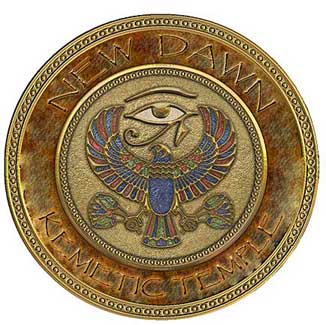|
|
|


~Alan Winston~
About 140 kilometers (85 miles) south of the High Aswan Dam
on the west bank of the Nile two temples were built during the New Kingdom.
When, in the 1960s, the High Dam was being constructed, one of these temples
that was built by Ramesses II, and is now usually referred to as the Temple
of Wadi al-Sabua (Wadi el-Sebua) but originally known as the "House-of-Amun",
was salvaged (in 1964) and moved to a new site several kilometers to the northwest,
while the earlier temple of Amenhotep III was, regrettably, left to be buried
beneath the waters of Lake Nasser. Both of these temples were part free standing
and part speos, meaning that a section of the temples were hewn from the surrounding
rock.
The temple built by Amenhotep III was dedicated principally to the Nuibian form
of the God Horus, and later, apparently during the time of Ramesses II, to Amun.
It was Damaged during the Amarna Period, but later restored by Ramesses II.
The temple that was actually built on the orders of Ramesses II, sometime between his 35th and 50th year as king, was dedicated to Amun-Re and Re-Horakhty. It's sphinx-lined approach in the two forecourts leading to the initial stairway provides the name of this area, which is known as the Valley of the Lions (Arabic Wadi al-Sabua). The entire complex that proceeds the rock hewn chambers was enclosed within a huge brick wall over a meter thick on a rectangular plan measuring 35 by 80 meters, with buttresses on the north and south external sides.
A stone gateway that was flanked by a colossal statue of Ramesses II and a sphinx on either side, forms the entrance to the first forecourt. Within this forecourt, a central alley was bordered by two large, hawk-headed sphinxes. To the south of this is a small court with an altar dedicated to Re-Horakhty.
A stairway leads up to the terrace of the section built in stone4, abutting on the cliff. The part of the temple that was built in stone and hewn from the cliff is similar to the temple at Garf Hussein, and corresponds to the typical tripartite cult temple, with a court, a hypostyle hall and sanctuary. A stone pylon measuring 24.5 meters wide and 20 meters tall, abutted by four colossi of Ramesses II some six meters high on one meter bases, forms the facade to the court beyond. Interestingly, this pylon has no recesses for the flagstaffs that are normally found in temple pylons.
Here, depictions of the pharaoh sacrificing enemies in front of Amun-Re and Re-Horakhty. Beyond, the "feast court" is almost square, measuring 19.8 by 20.6 meters. It is bordered laterally by two porticoes with five pillars with engaged standing statues of Ramesses II. To the south is a slaughter court that lies between the wall of the court and the enclosure wall.
A second stairway leads up to the second terrace running along the rock hewn part of the temple. Beyond and within the rock is a twelve pillared "hall of appearance". The pillars on either side of the central alley have statues of the pharaoh abutted on them. After the pillared hall is a transverse "chamber of offering" flanked by a room at either end, and beyond this are the sanctuaries. The center chamber is thought to be a bark chapel that once contained the sacred bark. The wall scenes represent Ramesses II embraced by Mut and Hathor, the offering of flowers to the royal bark and food to that of Amun-Re.
At the rear of the central chamber is a niche which once contained a statuary group consisting of Amun-Re, Ramesses II and Re-Horakhty. The entrance to the niche was decorated with an image of Ramesses II worshiping the gods within. Interestingly, however, this ancient theme was changed by the early Christians, who converted the temple into a church, to show Ramesses II offering to St. Peter, instead.